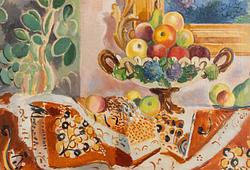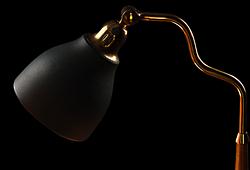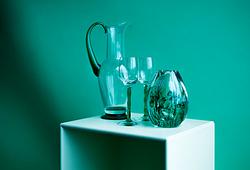Olle Hjortzberg
Flower Still Life
Signed by Olle Hjortzberg and dated 1942. Oil on panel 61 x 50 cm.
Muut tiedot
Olle Hjortzberg’s artistry is both long and multifaceted. The artist occupied his teenage years being taught book illustration by Agi Lindegren and serving as an assistant in decorative painting at J. A. G. Acke., and in the wake of his adulthood, Hjortzberg went on to contribute to the decoration of Uppsala’s Cathedral. Upon his return from Uppsala in 1892, Hjortzberg was accepted as a student at the Royal Swedish Academy of Fine Arts the same year. In 1898 the artist embarked upon his first of many trips abroad, commencing his travels in Paris and Rome, and later journeying onwards to to Greece, Syria and Palestine in 1900. It was primarily the impressions from these exotic, brightly illuminated environments, with their shifting colours and striking impressions that Hjortzberg returned to time and time again in his southern motifs. One of the most significant influences on Hjortzberg’s artistry was his encounter with Byzantine mosaics in Ravenna, yet it was as a decorative painter in large formats that Hjortzberg primarily worked, particularly in the context of church interiors. In 1908, Hjortzberg was called to be a member of the Academy of Fine Arts, and the following year he was appointed as a teacher of decorative art. In 1912 he was awarded a professorship in drawing, a position which he maintained until 1937, and instead became a professor in painting between 1937 and 1939. Concurrently, he also served as a teacher at the decorative school and as chairman of the Swedish Handicraft Society from 1926 to 1931, and from 1943 onwards, Hjortzberg was the president of the Academy of Fine Arts.
Among the more well-known of the artist's works as a mural painter are the paintings in Engelbrekt Church, which began in 1913, and the wall paintings in Linköping High School from 1916. Both of these decorative works display the typical elements of Hjortzberg's swelling, youthful plant ornamentations. Hjortzberg was also not averse to the stylistic ideals of the English Arts and Crafts Movement, which he frequently utilized in the many posters he composed as an early pioneer in the field. A well-known example is the poster for the 1912 Olympic Games in Stockholm.
As a counterbalance to the stylistically bound visual language in both mural painting and illustration art, Hjortzberg, in his mature age, turned to a new visual language. In numerous watercolors and oil paintings, Hjortzberg expressed his talent in a variety of flower still-life’s. In a fresh and uninhibited realistic style, Hjortzberg used the entire palette to capture the eternal beauty that can only be found in nature. Both exotic orchids and Swedish anemones were composed into still-life’s of various formats. Perhaps it is in the paintings of the floral splendor of Swedish summer meadows that Hjortzberg's sense for the decorative and beautiful comes to its utmost brilliance.












































